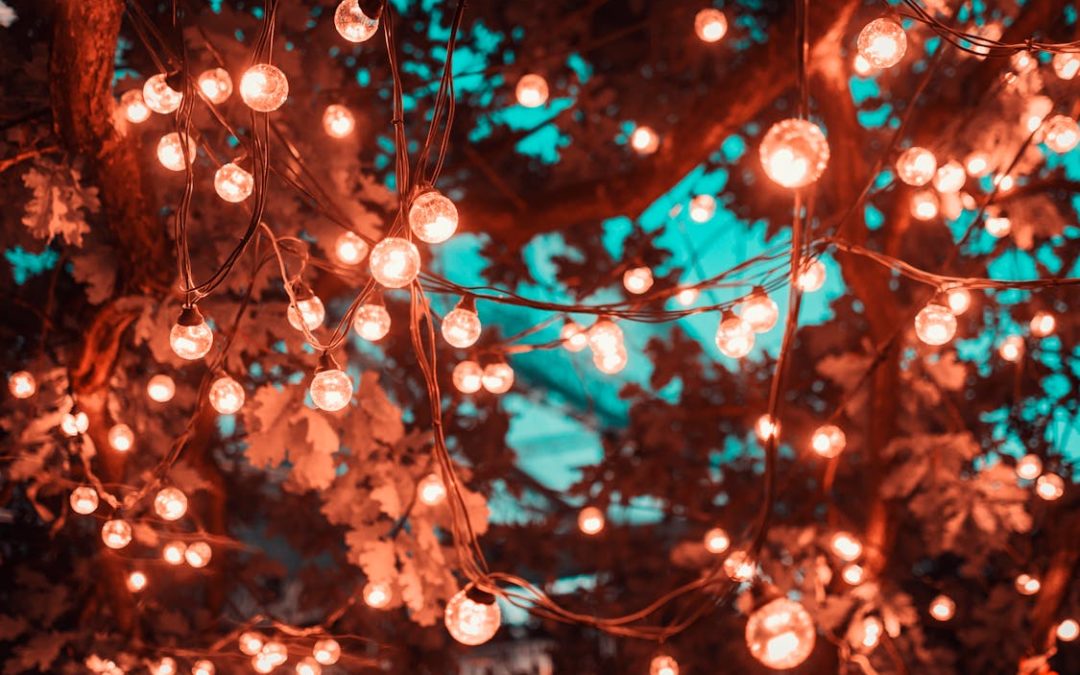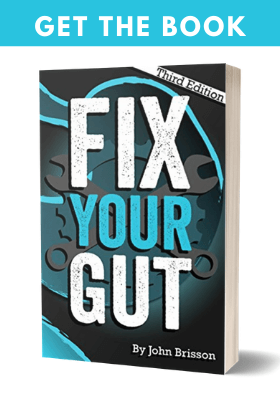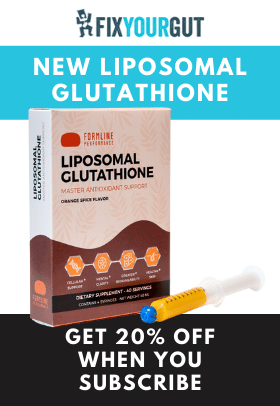Click Here to View a Fix Your Gut YouTube Video about Natural Light (https://www.youtube.com/watch?v=da6TpIanSM8)
One of the greatest inventions of our modern era that is sadly robbing our health is artificial lighting. Artificial lighting is thought to be safer than burning candles or starting campfires for light sources, which, when misused, can cause a fire. Also, we can illuminate more space than ever before with artificial lighting, which leads to excessive light pollution, especially at night. We are supposed to be exposed to ample natural light during the day. We are not supposed to be exposed to excessive amounts of artificial light (especially artificial light that contains more blue light) during the night. Many people go to sleep in a darkened room with our cell phones shining brightly on our faces defeating the purpose of going to bed in darkness to help facilitate proper melatonin production. Excessive blue light at night dramatically reduces melatonin production and hinders sleep quality. What are the differences between sunlight and artificial lighting, how artificial lighting affects our health, and the optimal choices for artificial light?
Our Sun and Natural Light
Our Sun is a star in the center of the Solar System with an average color temperature of about 5,900K (Kelvin). A sun emits electromagnetic radiation across most of the electromagnetic spectrum. The sun produces gamma rays because of nuclear fusion. However, high-energy photons are converted to lower-energy photons by absorption before reaching the sun’s surface. The sun emits gamma rays from solar flares, which are brief eruptions of intense high energy radiation from the sun’s surface. The sun also emits different forms of electromagnetic radiation, including X-rays, ultraviolet, visible light, infrared, and even radio waves. Finally, the electromagnetic spectrum has wavelengths measured in nanometers to differentiate the different forms of radiation.[1] [2]
Sunlight is a portion of the electromagnetic radiation given off by a sun and is composed of infrared, visible, and ultraviolet light. Sunlight is filtered by the Earth’s atmosphere and is a bright natural light and radiant heat source. Sunlight contains all colors of the visible spectrum, which is why it appears white. The sun’s color temperature changes throughout the day, with it being around 5,500K at solar noon and 3,200K at sunrise and sunset. The visible spectrum is measured from three hundred and eighty nanometers to seven hundred and fifty nanometers (nm). Most of the sunlight that reaches the Earth’s surface is from the visible spectrum. The color spectrum is made up of the visible colors of the rainbow and is also known as an acronym you learned in school, ROYGBIV (red, orange, yellow, green, blue, and violet). The visible spectrum makes up the colors of the rainbow. Sunlight through sunrise, daytime, and sunset contains radiation from the visible spectrum. However, sunrise and sunset provide more light from the visible spectrum. Blue light from the visible spectrum is essential to produce serotonin, dopamine, and norepinephrine during the day. Serotonin is acetylated and then methylated into melatonin at night when we are exposed to darkness. Finally, our eyes and brain can distinguish colors from a mix of multiple wavelengths within the visible spectrum, including pink or magenta.[3] [4] [5]
Information about ultraviolet light and infrared from the Sun:
Ultraviolet – 100 nm to 400 nm. It comprises a minimal amount of sunlight that reaches the Earth’s surface, and what does reach is mainly UVA.[6] [7]
- Ultraviolet A (UVA) – 315 to 400 nm, long-wave, black light. The ozone layer does not absorb ultraviolet A. UVA, like UVB, which stimulates the production of melanin, beta-endorphin, and nitric oxide. UVA, also like UVB, stimulates the creation of α-melanocyte-stimulating hormone (α-MSH), adrenocorticotropic hormone (ACTH); both are potent anti-inflammatories. Finally, “a number of recent studies demonstrate that UVA radiation can provide immunoprotection and also inhibit UVB-induced immunosuppression through modulation of various cytokines and enzymes, such as expression of heme oxygenase-1 (HO-1). UVA exposure increases expression of HO-1 that mediates antioxidant, anti-inflammatory, anti-apoptotic and anti-proliferative effects, and protects cells and tissues against oxidative stress and tissue injury.”[8] [9] [10]
UVA does penetrate the epidermis but generally does not penetrate the dermis, the second layer of our skin. Too much exposure to UVA radiation can also cause sunburn (it is, however, less likely to cause sunburn compared to UVB, “The ability of UVA radiation to cause skin erythema is approximately 103 to 104 times lower than that of UVB,” which is a type of radiation burn that occurs from overexposure to the sun. UVA radiation does not produce the hormone cholecalciferol. Most tanning beds are UVA only and, therefore, cannot produce cholecalciferol unless they are specialized beds containing UVB-producing bulbs. Exposure to too much UV radiation can sometimes trigger viral reactivation in some people because of the increased nitric oxide production. In addition, excessive amounts of mostly UVA exposure (when the UV index is low) can increase Th1 dominance[11] (https://selfhacked.com/blog/supplements-people-th1-dominant/). Sunrise and sunset generally contain little to no UVA, but most sunlight provides us UVA.[12] [13] [14]
- Ultraviolet B (UVB) – 280 to 315 nm, medium-wave. Ultraviolet B is also mostly absorbed by and helps form the Earth’s ozone layer. When our skin is exposed to UVB, cholesterol is photochemically converted to previtamin D3, which from spontaneous isomerization becomes cholecalciferol. Stimulates melanin production, a darkening pigment where the amino acid tyrosine is oxidized into dopaquinone, the precursor to melanin. Melanin protects us from UV radiation caused oxidative stress, colors our skin and iris, and maybe a potent endogenous chelator protecting us from heavy metal toxicity. It also reduces Th1 dominance[15] (https://selfhacked.com/blog/supplements-people-th1-dominant/), Th2 dominance[16] (https://selfhacked.com/blog/supplements-people-th2-dominant/), and Th17 dominance[17] (https://selfhacked.com/blog/th17/), by reducing TNF-α and IL-10 so proper exposure may relieve viral reactivation syndrome or histamine intolerance. UVB increases beta-endorphin levels relieving pain, increasing energy, and mood improvement. UVB also stimulates the production of α-melanocyte-stimulating hormone (α-MSH) and adrenocorticotropic hormone (ACTH), which are both potent anti-inflammatories. UVB is immunosuppressive (releases Neuropeptide substance P), which may help people suffering from differing autoimmune conditions but may cause issues for people with acute infections (however, sunlight that contains UVB also contains UVA and produces cholecalciferol which may help you maintain immune homeostasis). UVB induces hyperkeratosis and thickening of the stratum corneum, thus reducing UV transmission and might protect you from sunburn. Finally, exposure to UVB increases nitric oxide production, which can help maintain proper blood pressure and circulation.[18] [19] [20] [21] [22] [23] [24]
UVB usually does not penetrate the epidermis, the top layer of our skin. Indecent exposure to UVB radiation can cause sunburn, which is a radiation burn from our Sun. Exposure to too much UV radiation can sometimes trigger viral reactivation in some people because of the increased nitric oxide production. UVA or UVB triggering viral reactivation depends on the person. Winter sunlight was worse for me and triggered viral reactivation from the lack of UVB, not being able to produce vitamin D, and overstimulating my immune system. You can measure the amount of UVB you will be exposed to from sunlight exposure by researching the UV index for that day. The higher the UV index, the more significant the exposure to UVB. Midday sunlight contains a differing amount of UVB depending on the season and your location to the equator. Sunrise and sunset generally provide us no UVB.[25] [26]
- Ultraviolet C (UVC) – 100 to 280 nm, short-wave. Ultraviolet C is radiation that is at a higher frequency than violet light. Therefore, we cannot see this spectrum. UVC reacts with the Earth’s atmosphere to form the ozone layer. Due to absorption by the Earth’s ozone layer, very little reaches the surface, if any. UVC has potent germicidal properties and is used commercially in many germicidal lamps.[27] [28]
- Finally, the ultraviolet spectrum contains germicidal properties, which might be why grandma stated that if you will have a cleaner house if you keep your curtains and/or windows open during the day. Studies have shown that you can reduce bacteria and mold colonization by opening your windows (glass will block and reduce some UV) during the day allowing for more natural light to radiate through your house. Interestingly, if you cannot open your windows because of weather or because you live in a moldy area like a swamp and opening your windows will bring more mold spores inside, just opening your blinds and curtains and exposing your home to natural light has some reduced benefit as well.[29]
Infrared range – 700 nm to 1,000,000 nm. It comprises a large amount of the sunlight that reaches the Earth’s surface.[30]
Infrared-A – 700 nm to 1,400 nm. IR-A is also known as near-infrared. IR radiation can penetrate the epidermis, dermis, and subcutaneous tissue to differing extents depending on the specific wavelength range being studied, and its exposure gives a feeling of heat. IR-A exposure increases beta-endorphin production that can improve mood and relieve pain. Proper near-infrared exposure is essential for proper mitochondrial health. “The two principal chromophores are cytochrome c oxidase (CCO) which is unit IV in the mitochondrial respiratory chain, and TRPV ion channels. Photon absorption leads to dissociation of inhibitory nitric oxide from CCO leading to increased enzyme activity and raised ATP production and a burst of reactive oxygen species. The extra ATP produced can activate the Na+/K+ ATPase pump. Another type of calcium ion channel called “transient receptor potential vanilloid (TRPV) is activated by both visible and infrared light. Calcium signaling is a very important pathway in multiple cell types.”Sunlight throughout the day contains differing amounts of infrared. Sunrise and sunset contain more IR. If you want to expose yourself to IR-A without UV, try to go outside during sunrise and sunset. Doctor Jack Kruse recommends that exposing yourself to IR-A during sunrise may help protect your skin from the oxidative stress of UV exposure later during the day. “Cooler morning temperatures combined with the proportionally lower UV/IR-A ratio provide the ideal conditions to trigger IR-A beneficial effects without skin hyperthermia before potential UV insults (higher UV/IR-A ratio at noon). The same applies late in the afternoon with PBM tissue repair, if UV injury occurs. Consequently, IR-A prevents and restores the possible mid-day UVR injury to the skin within beneficial physiological irradiance boundaries”.[31][32] [33]
Infrared exposure, like anything, can cause problems with prolonged exposure. Erythema ab igne is a medical condition where prolonged heat (infrared radiation) may lead to developing reticulated erythema, hyperpigmentation, scaling, and telangiectasias in the affected area. Sitting too close to a fire or space heater for a prolonged period, using a hot water bottle or heating pad for too long, or placing an overheating laptop on your lap can cause this condition. Occasionally, the proper use of low-level light therapy (cold laser) or red-light LED therapy can be beneficial for mitochondrial support, faster healing of wounds, and repair, but nothing works as well as our Sun.[34] [35]
“Photobiomodulation exposure to visible and IR-A light which emulates the conditions of natural sunlight in wavelength, intensity, and dosage can be beneficial to the skin. Such light exposure might even pre-condition the skin, preparing it for upcoming (mid-day zenithal) UVR insults. On the other hand, exposure to artificial IR-A radiation of too broad of a range and intensity/dose can contribute to existing detrimental effects or cause negative effects of its own (increased MMP-1). Several studies demonstrate the damaging effects of IR-A radiation in the skin both in vitro and in vivo. However, they use high-intensity artificial IR-A light sources that do not reproduce real life daily sun exposure. The IR-A emitted by the sun and reaching the skin is not of such high intensity.”[36]
- Far-Infrared – “Another sub-division of IR radiation (far infrared, FIR, 3–25 μm), has also been observed to stimulate cells and tissue in both in vitro and in vivo studies. Moreover FIR therapy is considered a promising treatment modality for certain medical conditions. Technological adva
nces have provided new techniques for delivering FIR radiation to the human body. Specialty lamps and saunas, delivering pure FIR radiation (eliminating completely the near- and mid-infrared bands), have became safe, effective, and widely used sources to generate therapeutic effects. Fibers impregnated with FIR emitting ceramic nanoparticles and woven into fabrics, are being used as garments and wraps to generate FIR radiation powered by the body-heat of the wearer, and these garments provide diverse benefits to health.”[37]
The following are recommended reading about the proper use of light and laser therapy to improve your health:
Everything You Need to Know about Red Light Therapy a blog entry by Alex Fergus (https://www.alexfergus.com/blog/everything-you-need-to-know-about-red-light-therapy)
LLLT Selfhacked blog entry by Joe Cohen (https://selfhack.com/blog/my-review-of-lllt/)
The Ultimate Guide to Red Light Therapy: How to Use Red and Near-Infrared Light Therapy for Anti-Aging, Fat Loss, Muscle Gain, Performance, and Brain Optimization, by Ari Whitten
What Health Conditions are Shown in Literature to Improve with Proper Natural Light Exposure?
- Acne[38]
- Alzheimer’s disease[39] [40]
- Cognitive function[41]
- Depression[42] [43]
- Diabetes[44]
- Heart disease[45]
- Insomnia[46] [47]
- Jet lag[48]
- Multiple sclerosis[49] [50]
- Seasonal affective disorder[51]
- Psoriasis[52]
Artificial Lighting Information
Not all light bulbs are equal in the quality of the artificial light they give off. There are many different types of light bulbs that we can use for artificial lighting. So what are the various light bulbs commonly used for household and commercial artificial lighting?
- Fluorescent – Fluorescent lighting (hot cathode) contains a lamp tube containing low-pressure mercury vapor, argon, xenon, neon, or krypton gas. The inner surface of the lamp is coated with a fluorescent coating made of varying blends of metallic and rare-earth phosphor salts. The lamp’s electrodes are typically made of coiled tungsten. Fluorescent lighting uses fluorescence to produce visible light. An electric current interacts with the mercury vapor in the bulb, which produces short-wave ultraviolet light that causes a phosphor coating on the inside of the lamp to illuminate, creating artificial fluorescent lighting. Fluorescent lighting requires a ballast (electronic or magnetic) to regulate the current through the lamp. Fluorescent lighting can run on both AC (alternating current) and DC (direct current). Compact fluorescent bulbs (CFL) have an electronic ballast (some are magnetic) built into the bulb itself and a connector base; it does not need ballast housing for operation. Fluorescent bulbs generally contain a greener and oranger light and put out very little red light. There are fluorescent lights with modified spectrums (like ones that “mimic” more natural sunlight) and come in a variety of color temperature outputs. Most fluorescent lamps, especially CFLs, require a slight warm-up time for the electrical current to heat the electrode and reach full illumination fully. For example, when you switch on a standard CFL, it lights up with approximately eighty percent of its brightness, but it will heat up to its full brightness in about one minute. Fluorescent bulbs frequently flicker (some as much as one hundred times a minute) especially when they are first turned on (if the bulb has to warm up) if the light bulb is located in a cold area (like an uninsulated garage) when the bulb is dying, if you have a particular dimmable bulb, or if your bulb has a faulty starter or ballast and is not receiving enough current. Finally, fluorescent bulbs generally cannot dim unless specifically designed.
Fluorescent bulbs are very energy efficient and last longer than halogen and incandescent bulbs. Fluorescent bulbs also generate less heat than incandescent or halogen bulbs. Fluorescent bulbs emit a more significant amount of UV than incandescent and halogen bulbs. A 1993 United States study found that UV exposure from sitting under fluorescent lights for eight hours is equivalent to one minute of sun exposure. Finally, fluorescent bulbs with poor or cheap ballasts can be a fire hazard if they overheat.[53] [54] [55] [56] [57] [58] [59] [60]
- Halogen – A form of incandescent lighting that contains a tungsten wire filament made of metal that is encased in a quartz capsule, filled with a halogen (like iodine, chlorine, fluorine, or bromine) and a combination of nitrogen, argon, or krypton gas, to protect it from oxidation, sometimes enclosed in a glass bulb with a connector base. The use of a halogen gas increases the bulb’s life, and it operates at a higher temperature (therefore, it contains more blue and green light). Halogen, like incandescent lighting, usually does not flicker unless connected to a dimmer switch. If the light bulb is dying, or if not, a strong enough current is going through the filament. Halogen lighting does not contain mercury and works well on both AC (alternating current) and DC (direct current). Halogen light bulbs have the same color temperature as incandescent bulbs and have neodymium coated bulbs. Halogen lighting produces more significant amounts of UV and near IR radiation as heat because it runs hotter (even more likely than incandescent bulbs to cause burns and fires). However, most bulbs are designed to minimize UV exposure. Finally, halogen outputs more green, yellow, and orange light than incandescent but even less blue and less red.[61] [62] [63] [64] [65] [66]
Halogen bulbs are more energy-efficient than standard incandescent lighting. Finally, it is unknown when a halogen bulb and/or the capsule break if enough halogens leak, including fluorine or bromine, into the air to make you ill.
- Incandescent – Incandescent lighting is a light bulb that contains a tungsten wire filament (older models used a carbonized paper filament) made of metal that is encased in a glass bulb with a connector base filled with inert gas (argon and nitrogen mainly) or a vacuum to protect it from oxidation. Incandescent lighting was the first artificial lighting invented. The wire filament is heated by an electric current flowing through it to such a high temperature that it glows with visible light. Incandescent lighting usually does not flicker unless connected to a dimmer switch, if the light bulb is dying, or if not a strong enough current is going through the filament. Incandescent lighting does not contain mercury and works with both AC (alternating current) and DC (direct current). Most of the energy produced by incandescent lighting is heat instead of visible light, which is why bulbs can be very hot to the touch (be careful may cause burns or a fire under the right circumstances). Incandescent light bulbs generally have a color temperature of around 2700K but can be coated with neodymium to make the light appear bluer (appear around 5000K). Incandescent lighting also produces UV and near IR radiation as heat, but most bulbs are designed to minimize UV exposure. Finally, incandescent lighting provides a continuous black body spectrum of light that is like sunlight when compared to other bulbs. Incandescent lighting produces less blue and green light and more orange and red light when compared to sunlight.[67] [68] [69] [70] [71] [72]
Incandescent light bulbs are banned or difficult to purchase in many parts of the world because they are claimed to be not energy efficient. However, I would argue that the reason is because of planned obsolescence. Well-made incandescent bulbs have lasted a very long time, like the Centennial Light in Livermore, California. The Centennial Light has remained in operation since 1901. However, it has dimmed to being as bright as a four-watt nightlight. [73]
- LED (light-emitting diode) – LED bulbs are the most modern form of artificial lighting. LED bulbs contain light-emitting diodes housed within a glass bulb. Light-emitting diodes are a semiconductor that emits light when current flows through them. The electrons in the semiconductor recombine with electron holes, releasing energy in the form of photons, known as electroluminescence. The color of the artificial light they produce is determined by the energy required for electrons to cross the band gap of the semiconductor. A LED bulb contains a glass bulb, LED panel, a driver circuit, heatsink housing, and connector base. Early LEDs emitted mainly low-intensity infrared light and later visible red light that was used as indicator lights for electronics. Current LED bulbs can emit light of a variety of color temperatures. LED bulbs are also dimmable. LEDs, unlike fluorescents, do not need to heat up and come to full brightness immediately, but most bulbs’ light output does degrade gradually. Most LED’s run on direct current (DC), and in America, we use alternating current (AC) mainly, so they contain an electronic circuit in its connector. The circuit acts as a switching power supply, converting the distributed AC power to a low voltage, constant DC current. Finally, LED bulbs may flicker considerably (some as much as four hundred times a second) depending on the quality of the circuit (more likely if it is poor quality), if the LED does not have consistent power running to the socket, and if you use a non-dimmable LED bulb in a socket connected to a dimmer switch.[74] [75] [76] [77] [78]
LED bulbs are extremely energy-efficient, release negligible heat, and last for years before burning out.
Lighting Recommendations
Source: http://housecraft.ca/eco-friendly-lighting-colour-rendering-index-and-colour-temperature/
Notice something about the above picture? No artificial light bulb that is offered mimics sunlight, not even close. Hopefully, one day one can be made, and you can find some for purchase that claims they are close to natural sunlight, but alas, they are not.
I generally do not recommend fluorescent and LED bulbs. Fluorescent bulbs contain mercury and are hazardous when broken. You can contaminate yourself and your environment with mercury from improperly cleaning or disposing of a broken fluorescent bulb (yes, CFL bulbs also contain mercury vapor). Read the mercury section of chapter two for more information on how to decontaminate and dispose of a broken fluorescent bulb properly. Fluorescent bulbs also produce a weird light spectrum that is not even close to natural sunlight and is prone to flickering, which can cause headaches, brain fog, and lack of concentration in some people. Electronic ballasts emit some nnEMF radiation (not as much as magnetic ballasts). Ballasts that are not appropriately shielded are known to cause radio interference with nearby electronics, hindering their use.[79] [80] [81]
LED light bulbs are “safer” than halogen bulbs because they contain no mercury and have a better color spectrum. However, most LED light bulbs flicker way more often than fluorescent bulbs (some LED bulbs claim they do not flicker by making sure the circuit that converts AC to DC is of high quality and constant). Commercial available “white” light spectrum LEDs may (https://www.researchgate.net/publication/274781116_Retinal_damage_induced_by_commercial_light_emitting_Diodes_LED) trigger differing amounts of retinal cellular injury depending on exposure, from increased oxidative stress from the depletion of retinaldehyde (a form of vitamin A also known as vitamin A aldehyde), DHA, by excessive blue light exposure. If you use computers, televisions, and smartphones, I know it is almost impossible to escape retinal exposure to LED lighting. I recommend that you use flicker-free monitors, when possible, to reduce visual strain.[82] [83] [84] [85] [86]
Fluorescent or LED flicker can, at times, even be imperceptible. The flicker of fluorescent or LED bulbs might also trigger epileptic seizures in some people if severe enough.[87] [88]
I recommend that if you are indoors for an extended period under artificial lighting (especially fluorescent or LED) or use screened devices frequently (smartphone or computers as an example) that you wear daytime blue light reducing glasses like the Truedark Daywalker Elite. Wearing these glasses may help protect your eyes from the adverse effects of poor quality artificial light exposure, relieve eye strain, and reduce headache frequency. Finally, read the melatonin section in chapter nine for more information on blocking blue light at night.
Optimally I recommend using warm color incandescent light bulbs, but they are almost impossible to find in stores, and you must order them online. If you do not want to purchase warm color incandescent light bulbs, then warm color spectrum halogen lights (also known as eco-incandescent) are the next best option. Why do I recommend these bulbs? These light bulbs do not flicker if wired correctly; they do not contain mercury and emit less blue light. Of course, during the day, open your blinds and curtains to let in as much natural light as possible when you are home instead of using artificial lighting. Finally, I recommend very low flicker LED bulbs with high-quality driver circuitry if you must use LED lighting. The LED light bulbs should be “warm” (2,700K) and have a color rendering index rating as close to ninety-five as possible (the higher, the better).[89] [90] [91]
[1] Chaisson, Eric, McMillam, Steve. Astronomy: A Beginner’s Guide to the Universe, Pearson; 8 edition, January 13, 2016.
[2] Seeds, Michael, Backman, Dana. The Solar System, Cengage Learning; 9 edition, January 1, 2015.
[3] Chaisson, Eric, McMillam, Steve. Astronomy: A Beginner’s Guide to the Universe, Pearson; 8th edition, January 13, 2016.
[4] Seeds, Michael, Backman, Dana. The Solar System, Cengage Learning; 9th edition, January 1, 2015.
[5] Starr, Cecie, Evers, Christine, Starr, Lisa. Biology Concepts and Applications, Cengage Learning, 10th edition, January 1, 2017.
[6] Starr, Cecie, Evers, Christine, Starr, Lisa. Biology Concepts and Applications, Cengage Learning, 10th edition, January 1, 2017.
[7] https://www.tandfonline.com/doi/pdf/10.3137/ao.460108
[8] Starr, Cecie, Evers, Christine, Starr, Lisa. Biology Concepts and Applications, Cengage Learning, 10th edition, January 1, 2017.
[9] https://www.tandfonline.com/doi/pdf/10.3137/ao.460108
[10] https://www.ncbi.nlm.nih.gov/pmc/articles/PMC3427189/
[11] https://selfhacked.com/blog/supplements-people-th1-dominant/
[12] https://www.ncbi.nlm.nih.gov/pmc/articles/PMC3427189/
[13] https://www.miamiherald.com/living/health-fitness/skin-deep/article150382772.html
[14] https://www.ncbi.nlm.nih.gov/pubmed/1323616
[15] https://selfhacked.com/blog/supplements-people-th1-dominant/
[16] https://selfhacked.com/blog/supplements-people-th2-dominant/
[17] https://selfhacked.com/blog/th17/
[18] Starr, Cecie, Evers, Christine, Starr, Lisa. Biology Concepts and Applications, Cengage Learning, 10th edition, January 1, 2017.
[19] https://www.ncbi.nlm.nih.gov/pmc/articles/PMC3427189/
[20] https://www.ncbi.nlm.nih.gov/pmc/articles/PMC3897598/
[21] https://jackkruse.com/the-sunshine-of-your-life/
[22] https://jackkruse.com/time-10-can-you-supplement-sunlight/
[23] https://jackkruse.com/quantum-biology-7-vitamin-d/
[24] https://www.ncbi.nlm.nih.gov/pmc/articles/PMC3356951/
[25] https://www.ncbi.nlm.nih.gov/pmc/articles/PMC3427189/
[26] https://www.ncbi.nlm.nih.gov/pubmed/1323616
[27] Starr, Cecie, Evers, Christine, Starr, Lisa. Biology Concepts and Applications, Cengage Learning, 10th edition, January 1, 2017.
[28] https://www.npr.org/sections/health-shots/2018/10/18/658335490/grandma-was-right-sunshine-helps-kill-germs-indoors
[29] https://www.npr.org/sections/health-shots/2018/10/18/658335490/grandma-was-right-sunshine-helps-kill-germs-indoors
[30] Starr, Cecie, Evers, Christine, Starr, Lisa. Biology Concepts and Applications, Cengage Learning, 10th edition, January 1, 2017.
[31] https://neurohacker.com/healthy-mitochondria-scientific-benefits-of-being-outdoors
[32] Starr, Cecie, Evers, Christine, Starr, Lisa. Biology Concepts and Applications, Cengage Learning, 10th edition, January 1, 2017.
[33] https://www.ncbi.nlm.nih.gov/pmc/articles/PMC4745411/
[34] https://www.ncbi.nlm.nih.gov/pmc/articles/PMC4745411/
[35] https://www.ncbi.nlm.nih.gov/pmc/articles/PMC6047836/
[36] https://www.ncbi.nlm.nih.gov/pmc/articles/PMC4745411/
[37] https://www.ncbi.nlm.nih.gov/pmc/articles/PMC4745411/
[38] https://www.ncbi.nlm.nih.gov/pmc/articles/PMC4439741/
[39] https://www.ncbi.nlm.nih.gov/pubmed/29565713
[40] https://www.alzinfo.org/pym/feature/improving-sleep-and-sundowning-with-sunlight/
[41] https://www.ncbi.nlm.nih.gov/pmc/articles/PMC2728098/
[42] https://www.ncbi.nlm.nih.gov/pubmed/25424517
[43] https://www.ncbi.nlm.nih.gov/pmc/articles/PMC4398445/
[44] https://www.ncbi.nlm.nih.gov/pmc/articles/PMC2910714/
[45] https://www.ncbi.nlm.nih.gov/pubmed/30412763
[46] https://www.ncbi.nlm.nih.gov/pubmed/25424517
[47] https://www.ncbi.nlm.nih.gov/pmc/articles/PMC4398445/
[48] https://www.ncbi.nlm.nih.gov/pmc/articles/PMC2829880/
[49] https://msra.org.au/news/sun-exposure/
[50] https://n.neurology.org/content/90/14/e1191
[51] https://www.ncbi.nlm.nih.gov/pmc/articles/PMC4673349/
[52] https://www.ncbi.nlm.nih.gov/pubmed/21271993
[53] Pineault, Nicolas. The Non-Tinfoil Guide to EMFs: How to Fix Our Stupid Use of Technology, CreateSpace Independent Publishing Platform, November 2017
[54] https://www.ncbi.nlm.nih.gov/pubmed/1343229
[55] https://www.ncbi.nlm.nih.gov/pubmed/21535166
[56] https://www.ncbi.nlm.nih.gov/pubmed/23026199
[57] Box, Harry. Set Lighting Technician’s Handbook, Routledge, August 2010
[58] Milham, Samuel. Dirty Electricity: Electrification and the Diseases of Civilization, iUniverse, December 2012.
[59] https://www.lukestorey.com/lifestylistpodcast/dr-jack-kruse-the-toxic-lighting-crisis-and-how-to-fix-it-part-one-75
[60] http://www.lukestorey.com/lifestylistpodcast/dr-jack-kruse-the-toxic-lighting-crisis-and-how-to-fix-it-part-two-76
[61] Pineault, Nicolas. The Non-Tinfoil Guide to EMFs: How to Fix Our Stupid Use of Technology, CreateSpace Independent Publishing Platform, November 2017
[62] Box, Harry. Set Lighting Technician’s Handbook, Routledge, August 2010
[63] Milham, Samuel. Dirty Electricity: Electrification and the Diseases of Civilization, iUniverse, December 2012.
[64] https://www.lukestorey.com/lifestylistpodcast/dr-jack-kruse-the-toxic-lighting-crisis-and-how-to-fix-it-part-one-75
[65] http://www.lukestorey.com/lifestylistpodcast/dr-jack-kruse-the-toxic-lighting-crisis-and-how-to-fix-it-part-two-76
[66] https://www.superiorlighting.com/lighting-resources/light-bulb-learning-center/halogen-light-bulbs/halogen-lamp-components/
[67] Pineault, Nicolas. The Non-Tinfoil Guide to EMFs: How to Fix Our Stupid Use of Technology, CreateSpace Independent Publishing Platform, November 2017
[68] Box, Harry. Set Lighting Technician’s Handbook, Routledge, August 2010
[69] Milham, Samuel. Dirty Electricity: Electrification and the Diseases of Civilization, iUniverse, December 2012.
[70] https://www.lukestorey.com/lifestylistpodcast/dr-jack-kruse-the-toxic-lighting-crisis-and-how-to-fix-it-part-one-75
[71] http://www.lukestorey.com/lifestylistpodcast/dr-jack-kruse-the-toxic-lighting-crisis-and-how-to-fix-it-part-two-76
[72] https://edisontechcenter.org/incandescent.html
[73] https://www.centennialbulb.org/
[74] Pineault, Nicolas. The Non-Tinfoil Guide to EMFs: How to Fix Our Stupid Use of Technology, CreateSpace Independent Publishing Platform, November 2017
[75] Box, Harry. Set Lighting Technician’s Handbook, Routledge, August 2010
[76] Milham, Samuel. Dirty Electricity: Electrification and the Diseases of Civilization, iUniverse, December 2012.
[77] https://www.lukestorey.com/lifestylistpodcast/dr-jack-kruse-the-toxic-lighting-crisis-and-how-to-fix-it-part-one-75
[78] http://www.lukestorey.com/lifestylistpodcast/dr-jack-kruse-the-toxic-lighting-crisis-and-how-to-fix-it-part-two-76
[79] Milham, Samuel. Dirty Electricity: Electrification and the Diseases of Civilization, iUniverse, December 2012.
[80] Pineault, Nicolas. The Non-Tinfoil Guide to EMFs: How to Fix Our Stupid Use of Technology, CreateSpace Independent Publishing Platform, November 2017
[81] https://www.lukestorey.com/lifestylistpodcast/dr-jack-kruse-the-toxic-lighting-crisis-and-how-to-fix-it-part-one-75
[82] Milham, Samuel. Dirty Electricity: Electrification and the Diseases of Civilization, iUniverse, December, 2012.
[83] Pineault, Nicolas. The Non-Tinfoil Guide to EMFs: How to Fix Our Stupid Use of Technology, CreateSpace Independent Publishing Platform, November, 2017
[84] https://www.lukestorey.com/lifestylistpodcast/dr-jack-kruse-the-toxic-lighting-crisis-and-how-to-fix-it-part-one-75
[85] https://www.nature.com/articles/s41598-018-28254-8
[86] https://www.ncbi.nlm.nih.gov/pmc/articles/PMC2831109/
[87] Milham, Samuel. Dirty Electricity: Electrification and the Diseases of Civilization, iUniverse, December 2012.
[88] Pineault, Nicolas. The Non-Tinfoil Guide to EMFs: How to Fix Our Stupid Use of Technology, CreateSpace Independent Publishing Platform, November 2017
[89] Milham, Samuel. Dirty Electricity: Electrification and the Diseases of Civilization, iUniverse, December 2012.
[90] Pineault, Nicolas. The Non-Tinfoil Guide to EMFs: How to Fix Our Stupid Use of Technology, CreateSpace Independent Publishing Platform, November 2017
[91] https://www.lukestorey.com/lifestylistpodcast/dr-jack-kruse-the-toxic-lighting-crisis-and-how-to-fix-it-part-one-75






